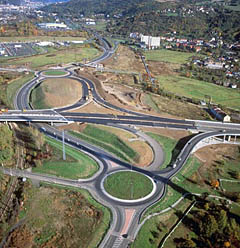
Today, the amendment to the EIA law comes into effect, and builders are criticizing it
 |
According to some experts, the amendment will affect already ongoing permitting processes, as the relevant authorities will review whether previously issued opinions meet the requirements of the directive. The Czech Republic faces the risk of losing up to 40 billion crowns in EU funds if it fails to reapprove transportation projects according to the amendment, according to Minister of Transport Dan Ťok.
Lawyer Zdeněk Horáček told ČTK that the reason for project delays will be greater public involvement. According to him, nonprofit organizations that have existed for at least three years or organizations with the support of 200 individuals will be able to challenge permitting decisions about projects.
“They will be able to file appeals or administrative lawsuits regardless of their involvement in previous permitting processes,” he stated. Participation in the procedures was a condition for filing an appeal before the amendment. Thus, builders may not be certain that they have addressed all affected parties. The lawyer estimates that delays could realistically reach months or even years.
Delays could be prevented by an amendment to the building law, which will simplify the permitting of constructions. However, it will not come into effect until at least the second half of 2016.
The EIA opinion should also no longer just be a sort of non-binding document in subsequent proceedings, but rather a binding opinion.
The English translation is powered by AI tool. Switch to Czech to view the original text source.
0 comments
add comment
Related articles
0
27.10.2016 | The Chamber supported the amendment allowing combined proceedings for buildings
0
12.05.2016 | Sobotka: The amendment addressing issues with EIA will be ready by the end of the month
0
11.02.2015 | Parliament limited the misuse of construction delays by lawsuits in the EIA process
0
13.12.2014 | Ecologists welcome the amendment on EIA, while builders and entrepreneurs are not pleased
0
11.11.2014 | The committee recommended approving the amendment to the EIA with adjustments
0
04.06.2014 | The builders do not like the changes related to EIA, claiming that it will stop construction projects






